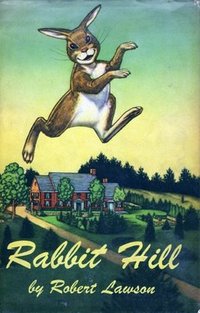Literary significance and criticism
The book was written at the end of World War II when racial integration and providing aid to the war-torn countries of Europe were on everyone's minds. The moral intent becomes clear when reading the story with those in mind. Suspicion, fear, and hate—personified in the elderly rabbit Uncle Analdas, and led by him when Georgie was injured and taken into the House—leads to the ravaging of the House's garden and grounds by his family and their friends.
In a short while, Georgie is released—healed—and can tell and show his family and friends that the New People have no intention of hurting them, and have made a place where they may all always find food and water, overseen by a statue of Saint Francis and the inscription "There Is Enough for All".
Printings of the book beginning in the 1970s and continuing today have edited the character Sulphronia, the new occupants' cook. This was done because she was originally depicted as an African American stereotype. [2]
This page is based on this
Wikipedia article Text is available under the
CC BY-SA 4.0 license; additional terms may apply.
Images, videos and audio are available under their respective licenses.
